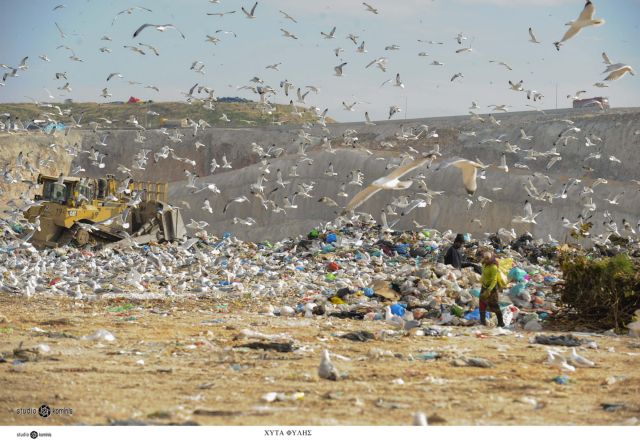
The public consultation on the Strategic Environmental Impact Study (SEIS) for the 3rd revision of the Regional Waste Management Plan (RWMA) of Attica started yesterday.
After all, neither of the previous two was implemented since, as the researchers of the Strategic Environmental Impact Study also report, almost all of the Municipal Solid Waste (MSW) is today buried in the Fyli Landfill, the operation of which has not ceased, as stipulated by the current Regional Waste Management Plan. Today, a project is being implemented in Fyli which includes the construction of new sanitary landfill cells with a capacity of 4,000,000 cubic meters.
Describing the current situation, it is characteristically stated that the rates of recovery and utilization of secondary products “are very low”, while the planned infrastructures of Waste Treatment Units (WTU) and Organic Waste Treatment Units (OWTU) were never built due to delays in planning and to the lack of available resources for public investment during the financial crisis.
The six waste treatment plants
For the six basic waste treatment units (Circular Economy Parks, as they are now called) only three are zoned, while for the other three, indicative zones are proposed.
According to the new SEIS, the proposal of the 2016 SEIS regarding the number and capacity of the Waste Recovery and Recycling Units (WRUs) of the Attica Region is revised as follows:
- Western Attica and the Western Sector will be served by the West Park (Fyli) WRU, with a design capacity of 200,000 tons/year until 2030.
- To serve Piraeus and the islands, the PPP-routed unit is being built within the Piraeus Park, in the wider area of the Schistos Waste Transfer Station, with a capacity of 120,000 tons.
- To serve part of the Eastern Sector, the routed WRU is being built in the Northeast Park in Grammatiko.
- The PPP-launched WRU will be built to serve the Central and part of the Southern Sector, within a Park that has yet to be determined, with a capacity of 315,000 tons.
- To serve the Northern Sector, the new WRU, which as mentioned will be installed by the end of the year, will have a capacity of 130,000 tons.
- In order to serve parts of the Eastern and Southern Sectors, a new 80,000 ton capacity WRU will be built within a Park that is planned by the Strategic Environmental Impact Study to be located by the end of the year.
Infrastructure outside Attica and mergers
In case of inability to find suitable sites, either because there are not enough areas, or because they do not meet the siting criteria of the National and Regional Waste Management Plan, it is envisaged that the WRUs will be sited in another regional unit.
In fact, as stated, “with a view to their timely completion by 2025 to achieve the national recovery, recycling and disposal targets, the WRUs with the lowest degree of maturity can be merged either with each other or with other more mature ones and their capacity is adjusted accordingly”.
Should such a need arise, three criteria will be strictly adhered to. First, no new units will be located within the already licensed Complete Waste Disposal Facilities. Second, it will seek to minimize the cost and environmental impact of waste transportation. Third, economies of scale will be sought to minimize processing costs.
A corresponding small waste treatment unit is being promoted specifically to serve Hydra, while a similar solution will be considered for Kythira with the aim of increasing the life of the landfill and maximizing recycling.
Waste burning and the involvement of the private sector
Especially for Attica, in the case of the implementation of an energy utilization unit by the Ministry of Environment and Energy or by another body, as stated in the Strategic Environmental Impact Study, “the possibility of creating WTUs and/or OWTUs will be examined in synergy with the said unit, as long as this is possible and appropriate both in terms of time and based on other criteria”.
In any event, the planning of the Ministry of Interior includes three or four combustion units, of which one in Attica, one in Ptolemaida, one in Crete, while it is possible that the location of one more in the area of Megalopolis may be necessary.
Also, among other things the promotion of secondary fuel production is being discussed. This, or the rest of the MSW and the rest of the residual flows will be directed towards energy recovery in energy-intensive industrial units and/or energy recovery units under the planning of the Ministry of the Interior or private investments, to achieve the goals for minimizing landfill.
In addition, recyclable materials from Sorting at Source – SaS (blue bin, recycling corners, green points, yellow bin, etc.) will be able to be sent to the landfills to optimize their purity.
The same materials can also be taken to a Recyclable Materials Sorting Center. The rates of Sorting at Source are much lower than the target that has been set while the network of green points is at a zero stage of development.
New life for the Engineering Recycling and Composting Plant
In the new waste management model of Attica, beyond the Circular Economy Parks, emphasis is placed on universal recycling, recovery of materials as well as on the reuse and mass diversion of bio-waste from burial, with discrete collection and a decentralized network of 10-15 bio-waste processing units .
Regarding the Engineering Recycling and Composting Plant of Ano Liosia, the necessary actions should be taken so that a) it functions as a “Green Plant” and receives bio-waste for processing and materials from the recycling areas, in order to be cleaned, separated and processed, and b) is upgraded.
Until the construction of the WRUs, temporarily, the residues from the processing of the Engineering Recycling and Composting Plan and the WTUs will be sent to a landfill in the Integrated Waste Disposal Facility of Attica, except for the North-Eastern Park WRU, the residues of which will be sent to the Grammatiko landfill.
In addition to the waste treatment plants, private waste treatment facilities can also be used in order to achieve the objectives of the Regional Waste Management Plan and as long as the transport costs and the usage fees of the units in question are reasonable according to the specs of the Special Interlevel Association of the Prefecture of Attica.
Latest News

Economist: Greece Included in the Best Performing Economies in 2024
Meanwhile, Northern European countries disappoint, with sluggish performances from the United Kingdom and Germany.

EasyJet Expands Its Routes from Athens
The airline’s two new routes will be to London Luton and Alicante and they will commence in summer 2025.

Capital Link Forum Highlights Greece’s Economic Resurgence; Honors BoG Gov Stournaras
Capital Link Hellenic Leadership Award recipient, Bank of Greece Gov. Yannis Stournaras, an ex-FinMin, was lauded for his pivotal role during Greece’s economic recovery

Tourist Spending in Greece Up by 14%, Visa Card Analysis Shows
Greece’s capital Athens emerged as the most popular destination, recording a 17% increase in transactions with Visa cards, surpassing even the cosmopolitan island of Mykonos.

Inflation in Greece Unchanged at 2.4% in Nov. 2024
The general consumer price index (CPI) posted a 0.4% decrease in November compared to the previous month

2024 Christmas Holidays: Extended Shop Hours Schedule
The 2024 Christmas Holidays extended shop hours schedule commences on Thursday, December 12 and runs until the end of the year.

ELSTAT: Seasonally Adjusted Unemployment Down in October
The number of employed individuals reached 4,284,694, an increase of 67,723 compared to October 2023 (+1.6%) and 22,002 compared to September 2024 (+0.5%).
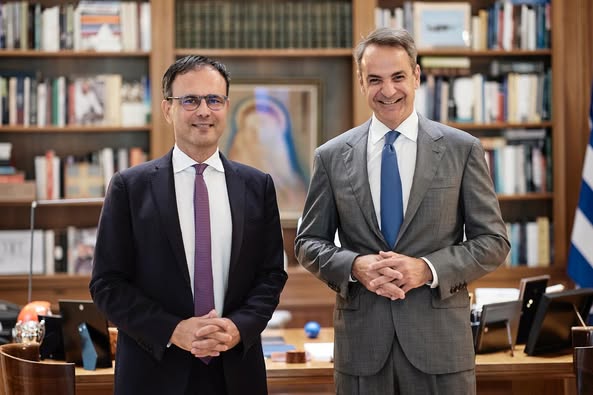
Greek PM’s Chief Economic Adviser Resigns
In the post on his Facebook page, Patelis did not disclose the reasons that led him to step down.

“Masdar Invests in the people of Greece and in the vision of TERNA ENERGY”
Four messages from the CEO of Masdar, the Arab renewable energy giant, after its acquisition of 70% of TERNA ENERGY

Lloyd’s List Greek Shipping Awards 2024: Honors for leading companies and personalities in the Greek shipping sector
20 awards presented at the 21st annual Lloyd's List Greek Shipping Awards


























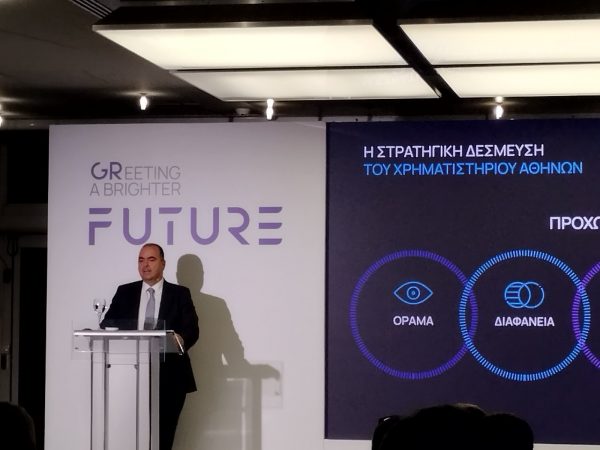



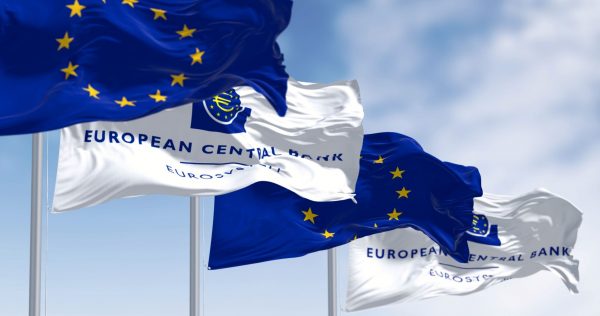

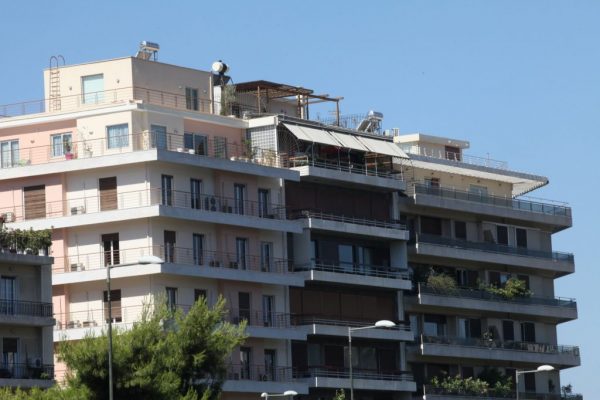

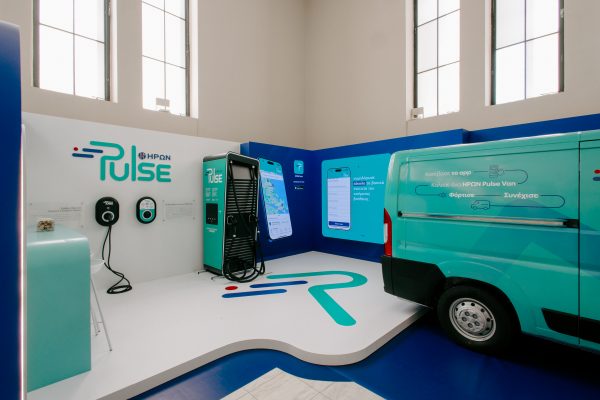



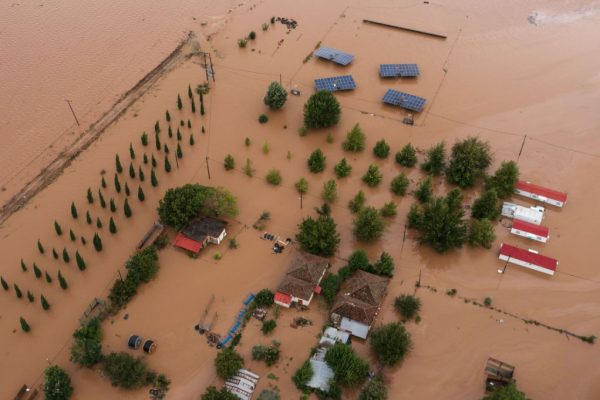



 Αριθμός Πιστοποίησης Μ.Η.Τ.232433
Αριθμός Πιστοποίησης Μ.Η.Τ.232433